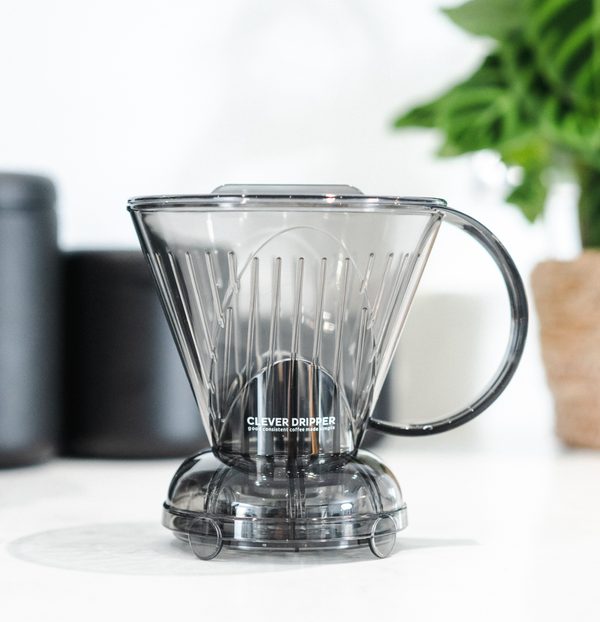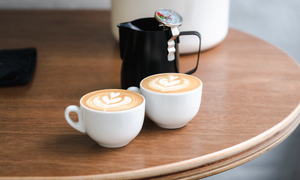
Dialling In- It’s a term you’ve probably heard already! It originates from baristas in cafes but in recent years, has made its way into the home world as well. In this article, we'll explore the process of dialling in and what a barista looks at, when trying to get the most out of your coffee. Small disclaimer, this article will focus mostly on espresso!
So, what exactly is "dialling in" dialling in refers to the process of adjusting the variables to achieve a better cup of coffee. This can relate to any form of coffee brewing but more often than not will be related to espresso. The main variables include Grind Size, Dose, Yield and Contact Time to produce the optimal shot of espresso. This process is crucial to achieving consistency in espresso shots and ensuring that each cup of coffee tastes as good as possible. Cafes often physically write the current recipe on or around the grinder, so that whoever pulls the next shot can be as consistent as possible with hitting these targets.
Let’s go over some of these main variables:
Grind size is one of the most crucial factors that affect the taste of espresso. It determines the surface area of the coffee bean that is exposed to water during the extraction process. A finer grind size will lead to a slower extraction and you’d never have guessed but a coarser grind size will lead to a faster extraction!
Dose, or the amount of coffee used in the brewing process, also plays a significant role in determining the strength and flavour of espresso. Dose is a handy variable in some situations but also generally has a similar effect to grind size.
Yield, or the amount of espresso extracted from a dose of coffee, also affects the flavour of espresso. A smaller yield, say around 20-30g is considered a more traditional espresso, while a much more modern style might be as high as 45-55g yield. On average, most espresso recipes in the specialty coffee world would fall pretty close to the 20g Dose, 40g Yield.
Contact Time is a crucial factor as well. The amount of time it takes for water to pass through the coffee bed during the extraction process will be a strong indicator of the strength and extraction of the espresso. A shorter extraction time will generally result in a weaker and less concentrated shot, while a longer extraction time will result in a stronger and more concentrated shot.
So how are decisions made about dialling in? This is not meant to be exhaustive but here are some general rules that should help steer you in the right direction. If the espresso shot is thin, sour or lacking body, the grind should be adjusted finer. This will slow down the flow rate of the espresso, allowing for better extraction. On the other end of the scale, if the shot is muddy, bitter or overly intense, the grind should be adjusted coarser. This will speed up the flow rate, preventing over-extraction and producing a more balanced shot. It's important to remember that small adjustments to the grind can have a big impact on the flavour of the espresso. It's best to make changes gradually until the desired flavour profile is achieved. In a cafe, barista’s commonly do this and call this “micro adjustments” and monitor the variables across the next few shots.
An important lesson to learn when changing beans, even in a home setup, is not to make more than one adjustment at a time. This is because if you make multiple changes, it will be difficult to determine which adjustment resulted in which change in flavour. For example, if you adjust your grind finer and lower your dose at the same time- Even if it’s perfect, in future situations this is likely to be impossible to replicate this improvement. The moral of the story is to always start by making minor adjustments to your grinder and espresso machine. Once you have made a single adjustment, it’s important to note our main variables; Grind Size, Dose, Yield and Contact Time and then taste the espresso shots to see what you think! Although different coffees can often pull really differently, it’s generally a lot less wasteful to make these small adjustments and methodically make your way to a great espresso, rather than trying for a hail mary type adjustment that will likely end up in quite a few shots down the drain. This approach also allows you to develop a deeper understanding of the results you get in the cup, from these individual adjustments of our variables.
Dialling in is a crucial process in the cafe world but that doesn’t mean you can’t dial in just like the barista from your favourite cafe at home. Be patient, be methodical, taste everything and enjoy the process. The best way to learn is by tasting for yourself, trying different recipes, trying different beans and trying to be as consistent as possible in the way you make espresso. I’m sure next time you visit your favourite cafe you’ll have to take a moment to appreciate the hard work and dedication that goes into dialling in the coffee and then nailing that recipe throughout the day.











